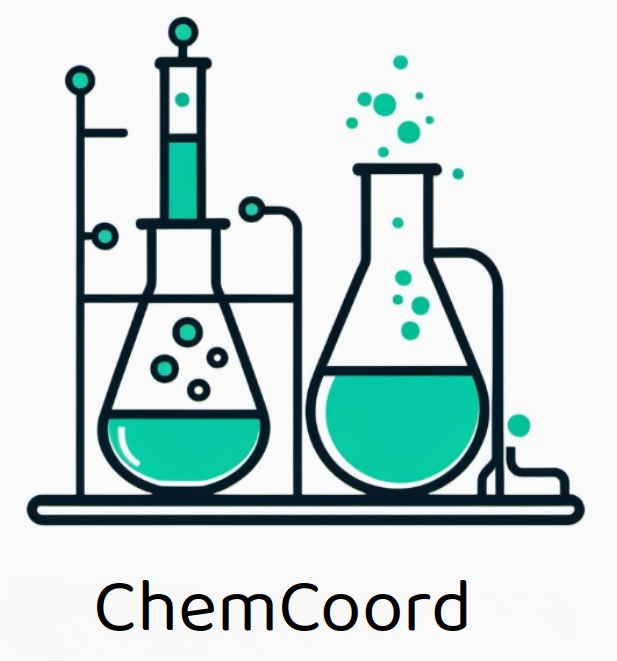
|
|
| Latest Release | 
|
| Package Status | 
|
| Documentation | |
| License | 
|
| Build Status | |
| Coverage |
The project's website with documentation is: http://chemcoord.readthedocs.org/
- Molecules are reliably transformed between cartesian space and non redundant internal coordinates (Zmatrices). Dummy atoms are inserted and removed automatically on the fly if necessary.
- The created Zmatrix is not only a structure expressed in internal coordinates, it is a "chemical" Zmatrix. "Chemical" Zmatrix means, that e.g. distances are along bonds or dihedrals are defined as they are drawn in chemical textbooks (Newman projections).
- Analytical gradients for the transformations between the different coordinate systems are implemented.
- Performance intensive functions/methods are implemented with Fortran/C like speed using numba.
- Geometries may be defined with symbolic expressions using sympy.
- Built on top of pandas with very similar syntax. This allows for example distinct label or row based indexing.
- It derived from my own work and I heavily use it during the day. So all functions are tested and tailored around the work flow in theoretical chemistry.
- It as a python module ;)
A working python 3 installation is required (3.7 <= version <= 3.11 are tested).
It is highly recommended to use this module in combination with Ipython and jupyter.
There are packaged versions on PyPi and conda-forge.
For the packaged version from PyPi, the following commands have to be executed:
pip install chemcoord
For the packaged version from conda-forge, the following commands have to be executed:
conda install -c conda-forge chemcoord
For the up to date development version (experimental):
git clone https://github.com/mcocdawc/chemcoord.git cd chemcoord pip install .
Neither installation nor running the module are tested on windows. To the best of my knowledge it should work there as well. Just use the same steps as for UNIX.
The theory behind chemcoord is described in this paper. If this package is used in a project that leads to a scientific publication, please acknowledge it by citing.
@article{https://doi.org/10.1002/jcc.27029,
author = {Weser, Oskar and Hein-Janke, Björn and Mata, Ricardo A.},
title = {Automated handling of complex chemical structures in Z-matrix coordinates—The chemcoord library},
journal = {Journal of Computational Chemistry},
volume = {44},
number = {5},
pages = {710-726},
keywords = {analytical gradients, geometry optimization, non-linear constraints, transition state search, Z-matrix},
doi = {10.1002/jcc.27029},
year = {2023}
}
My (Oskar Weser) master thesis including a more detailed derivation of implemented equations and the mathematical background can be found here.
Zulip is an open-source modern team chat app designed to keep both live and asynchronous conversations organized, that supports the development of chemcoord with a free plan.